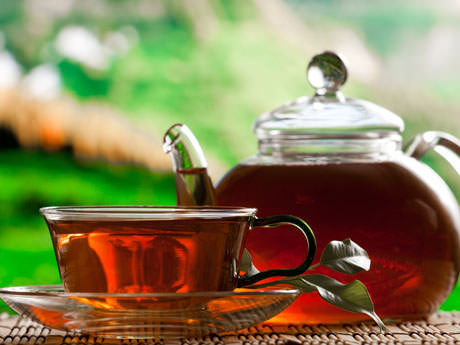Introduction
Fast growing as a major tourist destination in Asia, the country island of Sri Lanka is widely known for the quality and quantity of its tea production. The sight of its tea plantations rolling up hillsides and through valleys is not unlike seeing vineyards in Italy or California, or coffee plantations in Brazil and Costa Rica – and enjoying its product is an equally enriching experience. Its tea is considered amongst the finest in the world and anyone who visits the country must sample this commodity – either by travel to tea regions or sampling it in the cup.
Background
Once run by British colonizers, Sri Lanka’s tea production is now a source of pride for the country’s population and a huge contributor to its national economy with 2% of the total GDP or about $700 million a year. The country’s extremely diverse landscape means it can produce a wide variety of fascinating teas which are often highly regarded by tea connoisseurs around the world. More than a million out of Sri Lanka’s 20 million people are directly or indirectly employed in the country’s tea industry.
Main Tea Districts in Sri Lanka
Tea is grown at three defined altitudes in the country, meaning the plant is categorized into three different areas: high-grown, mid-grown and low-grown. The high-altitude teas are exposed to chill winds, dry and cool conditions above 1,200 meters in altitude (nearly 4,000 feet), and are well-rounded teas with a bright and strong taste. Mid-grown teas are between 600-1,200 meters (1,960-3,937 feet) and carry a strong, rich and full-bodied flavor. Low-grown teas are subject to long periods of intense sunshine and dry weather, are often carefully cultivated and surrounded by luxuriant vegetation and palm trees for protection. Consequently, they are heavy, robust and deep in color and coveted for their high quality.
Dimbula
This district produces the most famous of the Ceylon teas in the country. Grown and cultivated on former coffee crops some 5,000 feet above sea level, this tea is described as light and bright in color and a strong, fresh flavor in the mouth. Notes of jasmine and cypress can be detected in its aroma.
Kandy
Sri Lanka’s tea production originated here. Noted for its distinct flavors, tea from Kandy is considerably local and regional in its properties but usually retain a brighter infusion with a coppery tone. This high-altitude product appears lighter in the cup but has a strong and intense body.
Nuwara Eliya
The best-known of Sri Lanka’s numerous tea districts mostly due to its charming “Little England” landscape, this high-altitude region’s teas are wonderfully fragrant with a rarefied and refined quality. Its small leaves take on an orange hue after drying and creates a subtle golden hue and a delicate and lovely smelling bouquet in the cup. Orange Pekoe is the most popular tea from this area.
Uva
This area’s fine-flavored tea is grown at the middle altitudes on the eastern slopes of Sri Lanka’s Central Mountains. With a bright, deep amber color and a strong Ceylon flavor, it is a great morning or after-lunch choice.
Ruhuna
Teas from the Ruhuna region are defined as low-grown and come in a wide variety of leaf styles and sizes due to the rich soil and low elevation making a fast-growing tea bush nd long, beautiful leaf that turns intensely black on withering and is perfect for rolling. Its full-flavored black teas are widely known and hugely popular with tea lovers.
Sabaragamuwa
This is Sri Lanka’s biggest tea-growing district, and primarily low-grown. Described by tea tasters as exceptionally stylish, this region’s teas are not unlike its Ruhunan neighbor’s except with a hint of sweet caramel in its aroma and not quite as strong. Thanks to its diverse climate, many teas from this area have a very distinct flavor. Teas from here and Ruhuna make up 60% of Sri Lanka’s total tea production.
Five Facts About Sri Lanka Tea
- Sri Lanka is the fourth-largest exporter of tea in the world, after only China, India and Kenya, totalling 19% of the world’s tea exports. In the 1960s Sri Lanka was the world’s largest tea exporter.
- The Ceylon name comes from Sri Lanka’s former moniker – Ceylon. When the country changed its name to Sri Lanka in 1972, after considerable debate it retained “Ceylon” for marketing and branding purposes.
- Tea plantations in Sri Lanka are largely nationalized, with no cultivator allowed to own more than 50 acres for any purpose. State production is supervised by the Sri Lanka Tea Board and several other bodies.
- Tea is not native to Sri Lanka. It was introduced with a single camellia sinesis plant brought from China in 1824 by the British and planted in the Royal Botanical Gardens in Peradeniya for non-commercial purposes. James Taylor then started the country’s first tea plantation in Kandy in 1867 for export to London. Since then, the industry has grown to a $1.5-billion export business.
- There are strict regulations that must be adhered to for a tea to be legally called “Ceylon” tea, including the requirement that 100% of the tea must be grown, produced and packaged in Sri Lanka. If a tea has 95% Sri Lankan-produced content, it can’t be branded as a Ceylon tea.

